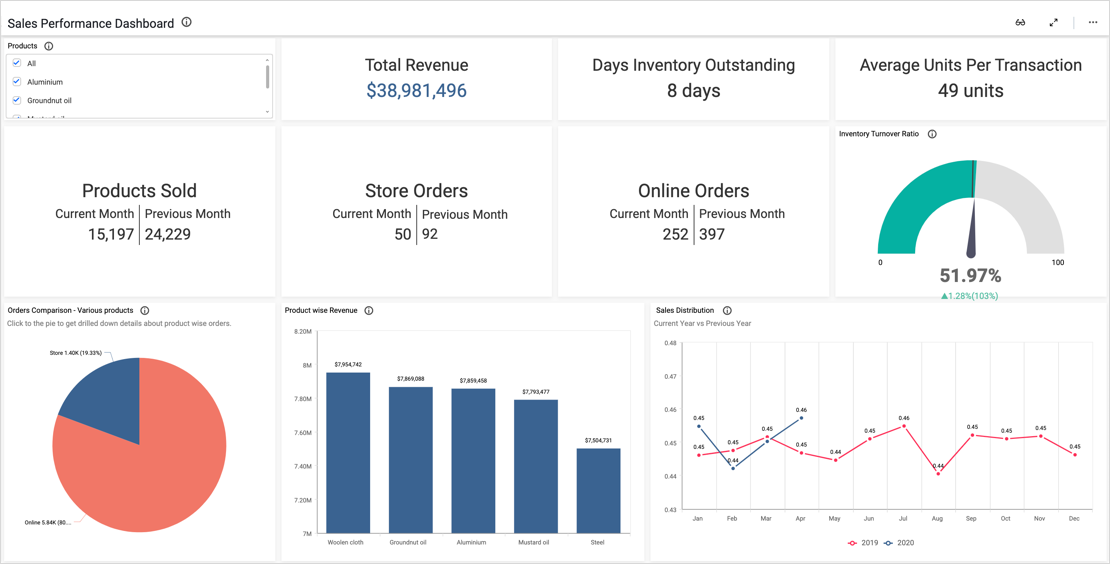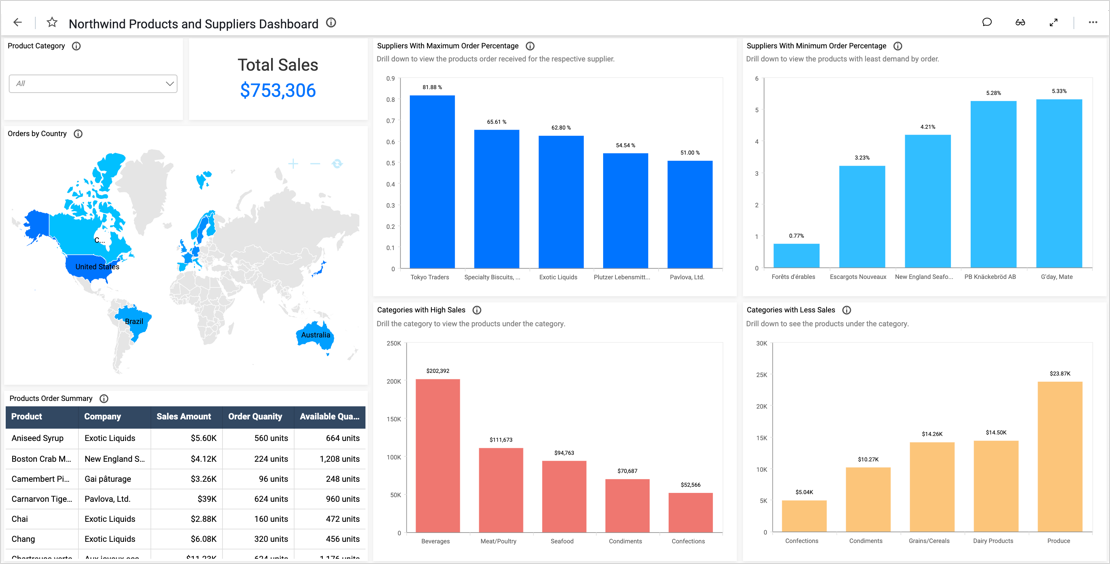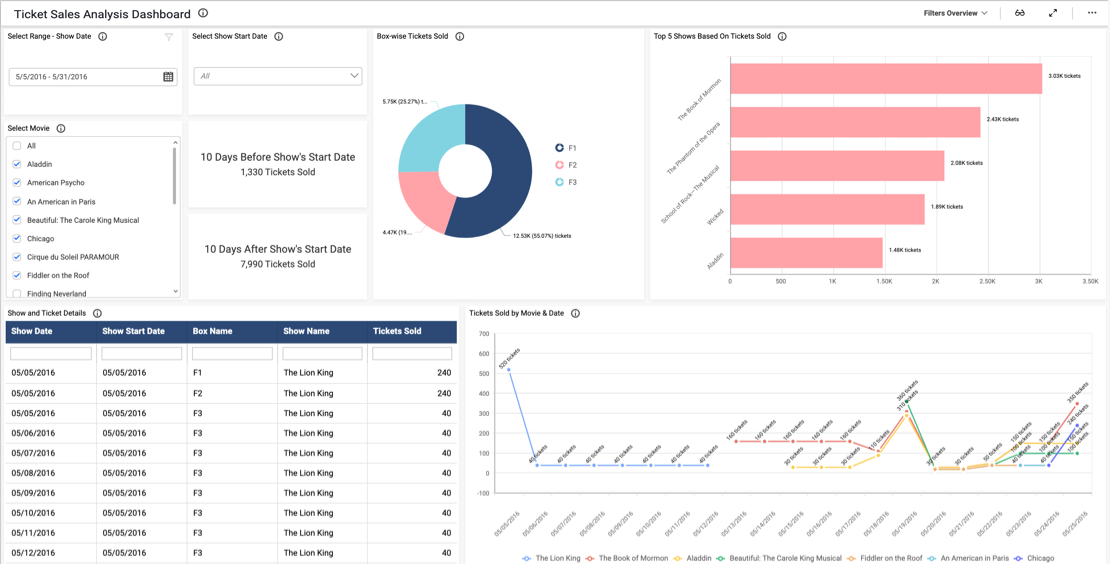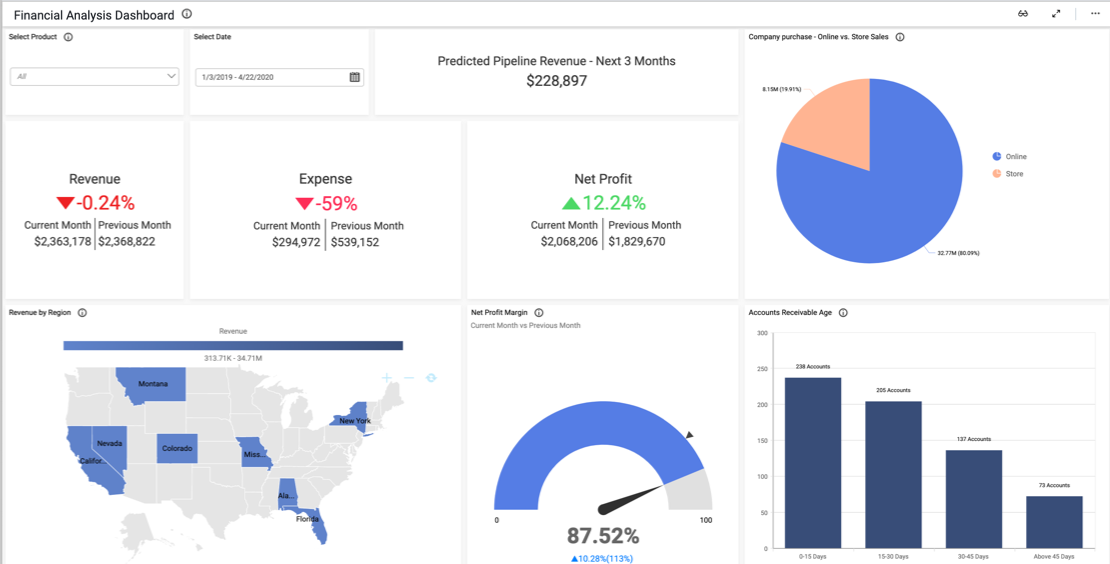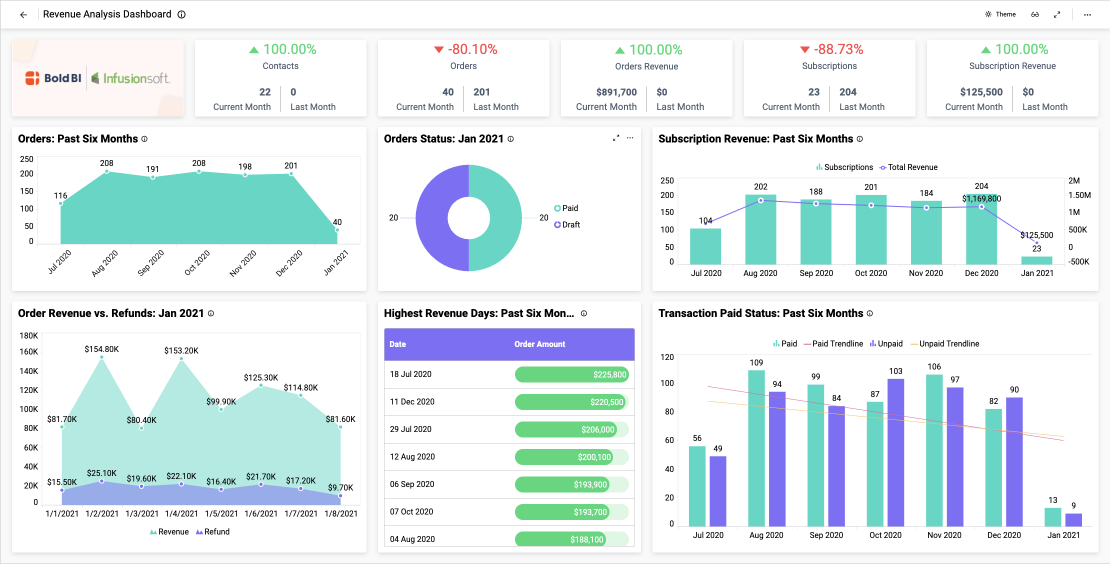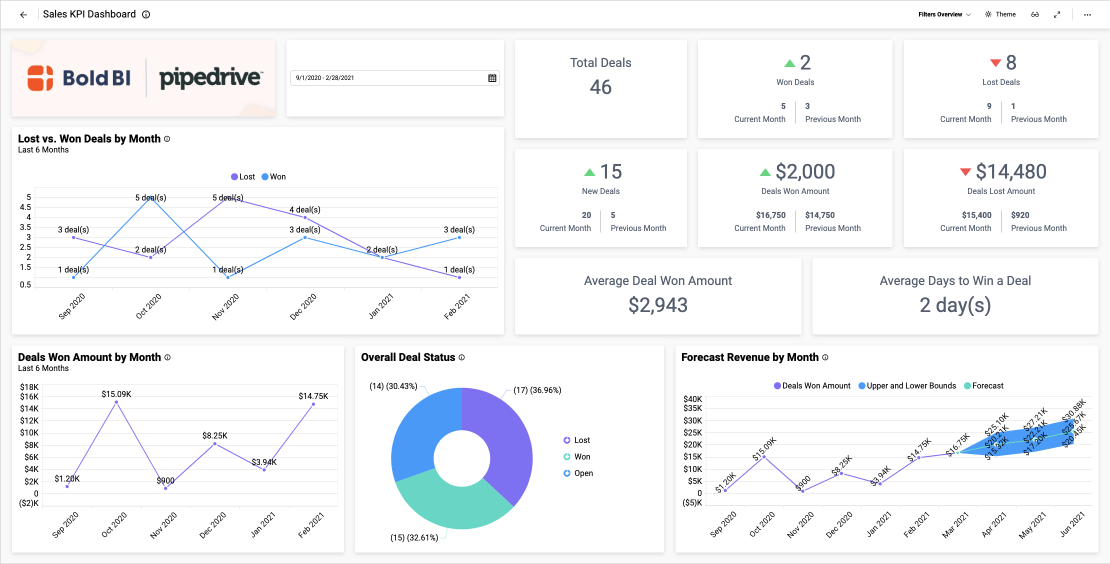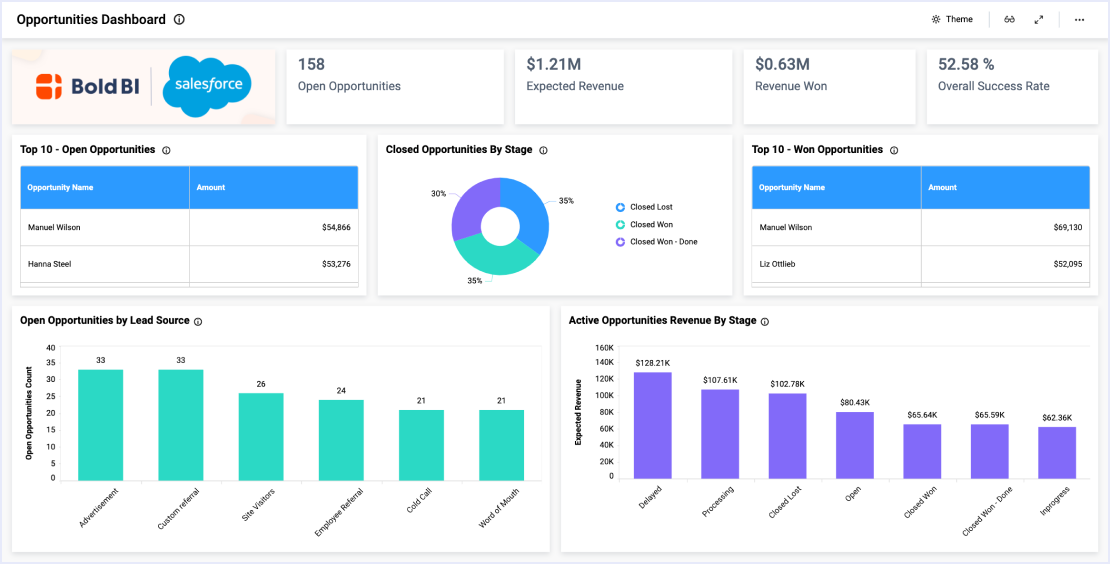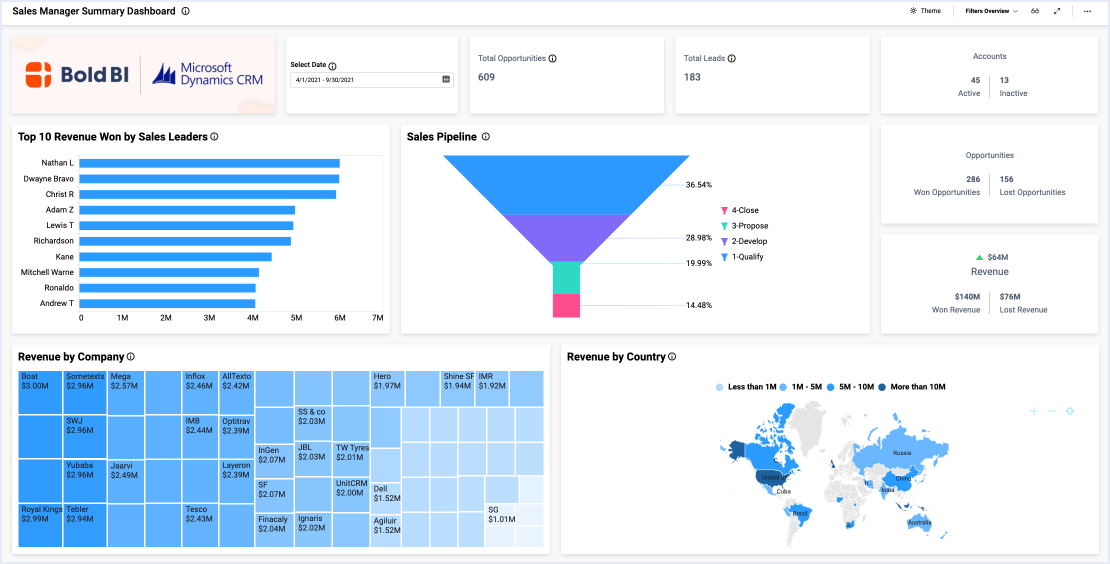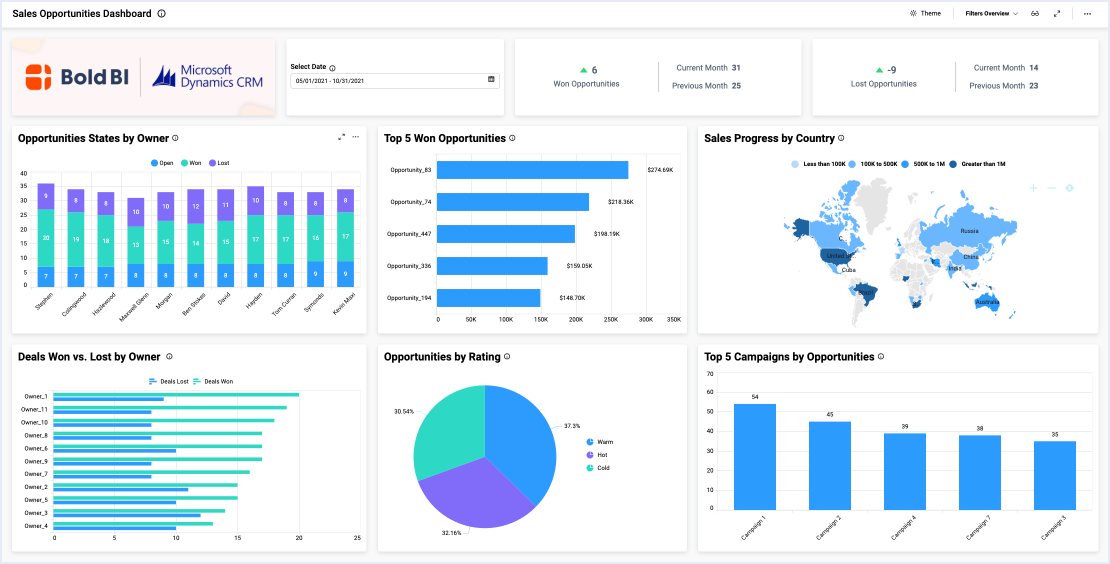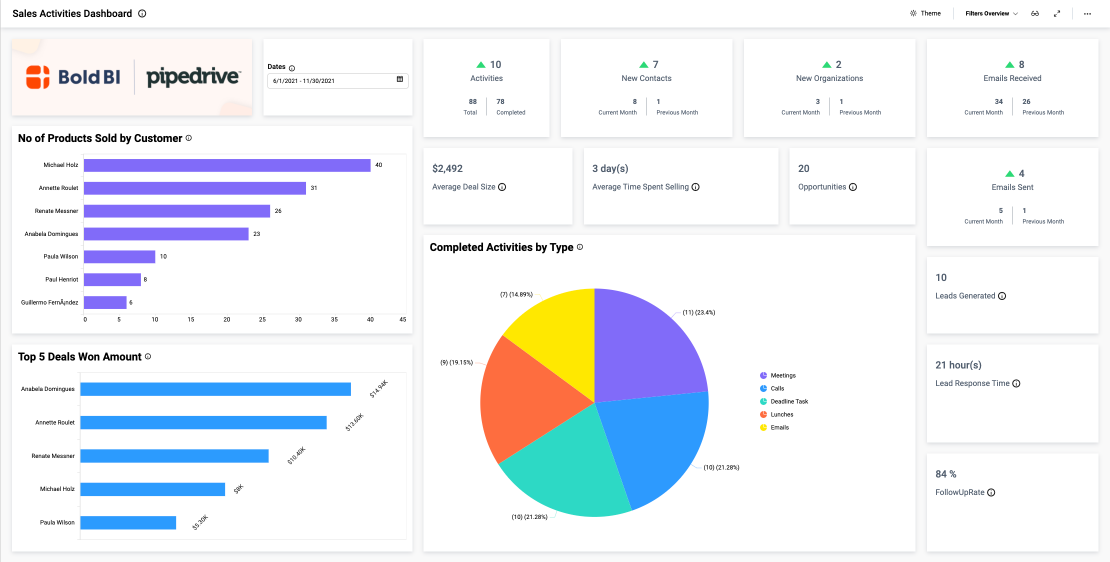- Firstly, how many accounts and leads do we have compared to last month?
- Secondly, how do our leads break down by campaign and rating?
- Thirdly, how do our accounts break down by revenue, country, and industry?
- Finally, what is our lead generate rate? Also, what are our lead sources?
Review Lead and Account Metrics
From tracking sales leads and KPIs to preparing for customer demos, sales managers have a lot on their plates. Sales leads tracking dashboards like this one can help leaders review the key metrics they depend on and set their teams up for success.
First, with the card widgets at the top of the dashboard, leaders can see how many accounts and leads they have compared to last month. Viewers can also see several widgets relating to leads. For example, viewers can see leads by campaign, rating, and source and owner. This data, along with the lead generation rate chart, can help leaders determine which campaigns and sources are proving fruitful for the company.
Next, three widgets offer insight into the team’s accounts, breaking them down by revenue, country, and industry. Finally, the Leads Summary grid lists each lead’s account, creation date, status, state, and merge status.
Filter Your Data
It is also worth noting that viewers can filter the dashboard’s data using the date filter at the top of the dashboard. This feature is especially useful for leaders who wish to focus their reviews on specific periods of time.
From tracking sales leads and KPIs to preparing for customer demos, sales managers rely on data to ensure their teams are on track to meet their goals. With a sales leads tracking dashboard, you can track the metrics you depend on to meet short and long-term goals and keep your team running smoothly.

